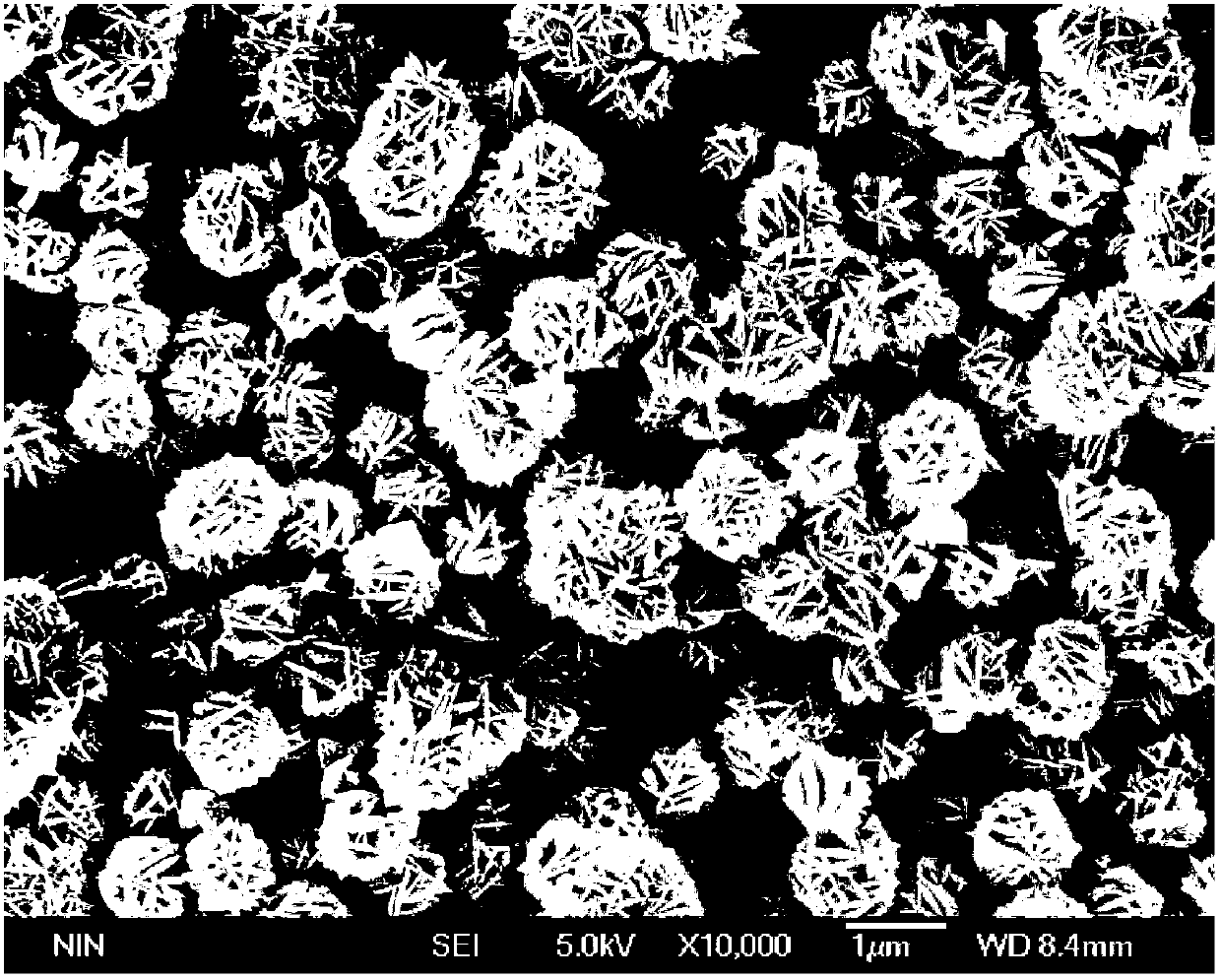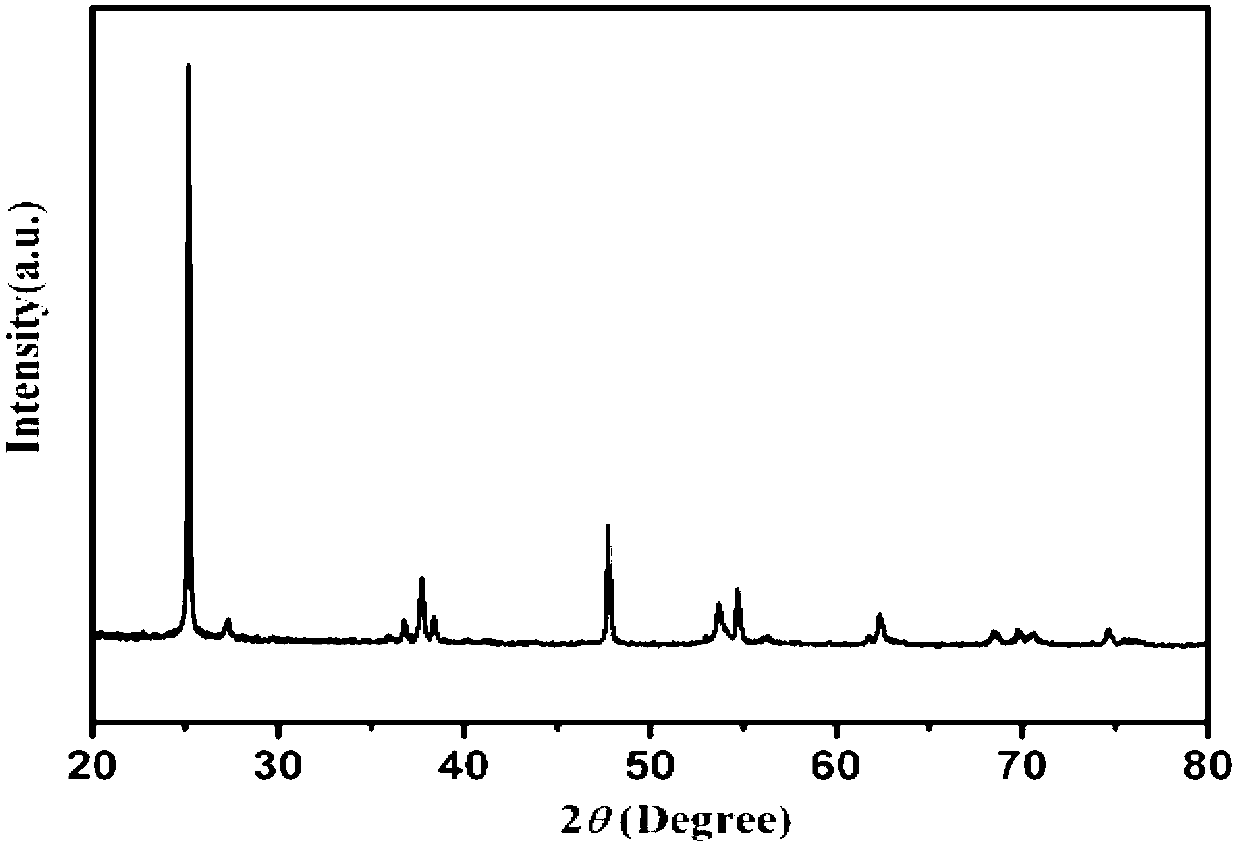TiNb-alloy surface biological activating treatment method
A bioactivation and treatment method technology, applied in the field of TiNb alloy surface bioactivation treatment, to achieve the effects of improving biocompatibility and bioactivity, perfect crystal lattice development, high specific surface area and roughness
- Summary
- Abstract
- Description
- Claims
- Application Information
AI Technical Summary
Problems solved by technology
Method used
Image
Examples
Embodiment 1
[0023] Step 1. Polish the TiNb alloy sheet with a size of 20mm×10mm×2mm sequentially with 150#, 600# and 1000# sandpaper, then place the polished TiNb alloy sheet in absolute ethanol for ultrasonic degreasing, and then use Naturally air-dried after ionic water cleaning; the mass percentage of Nb in the TiNb alloy sheet is 20%, and the balance is Ti and other unavoidable impurities;
[0024] Step 2, put the TiNb alloy sheet air-dried in step 1 into a hydrothermal kettle with a polytetrafluoroethylene lining equipped with a mixed aqueous solution of hydrogen peroxide and hydrofluoric acid, then seal the hydrothermal kettle and place it in an oven. The hydrothermal reaction was carried out for 6 hours at a temperature of 180°C; the concentration of hydrofluoric acid in the mixed aqueous solution was 0.064mol / L; the volume percentage of hydrogen peroxide in the mixed aqueous solution was 28.5%; the volume of the hydrothermal kettle The filling degree is 70%;
[0025] Step 3. Take...
Embodiment 2
[0029] Step 1. Polish the TiNb alloy sheet with a Nb mass percentage of 20% and a size of 20mm×10mm×2mm with 150#, 600# and 1000# sandpaper in sequence, and then place the polished TiNb alloy sheet in an anhydrous Ultrasonic degreasing in ethanol, then cleaning with deionized water and air drying;
[0030] Step 2, put the TiNb alloy sheet air-dried in step 1 into a hydrothermal kettle with a polytetrafluoroethylene lining equipped with a mixed aqueous solution of hydrogen peroxide and hydrofluoric acid, then seal the hydrothermal kettle and place it in an oven. The hydrothermal reaction was carried out for 14 hours at a temperature of 180°C; the concentration of hydrofluoric acid in the mixed aqueous solution was 0.064mol / L; the volume percentage of hydrogen peroxide in the mixed aqueous solution was 28.5%; the volume of the hydrothermal kettle The filling degree is 70%;
[0031] Step 3. Take out the hydrothermal kettle after the reaction in step 2 from the oven, take out the...
Embodiment 3
[0035] Step 1. Polish the TiNb alloy sheet with a mass percentage of Nb of 10% and a size of 40mm×8mm×1mm with 150#, 600# and 1000# sandpaper in sequence, and then place the polished TiNb alloy sheet in an anhydrous Ultrasonic degreasing in ethanol, then cleaning with deionized water and air drying;
[0036] Step 2, put the TiNb alloy sheet air-dried in step 1 into a hydrothermal kettle with a polytetrafluoroethylene lining equipped with a mixed aqueous solution of hydrogen peroxide and hydrofluoric acid, then seal the hydrothermal kettle and place it in an oven. The hydrothermal reaction was carried out for 24 hours at a temperature of 160°C; the concentration of hydrofluoric acid in the mixed aqueous solution was 0.032mol / L; the volume percentage of hydrogen peroxide in the mixed aqueous solution was 15%; the volume of the hydrothermal kettle The filling degree is 80%;
[0037]Step 3. Take out the hydrothermal kettle after the reaction in step 2 from the oven, take out the ...
PUM
| Property | Measurement | Unit |
|---|---|---|
| length | aaaaa | aaaaa |
| width | aaaaa | aaaaa |
| thickness | aaaaa | aaaaa |
Abstract
Description
Claims
Application Information
 Login to View More
Login to View More - R&D
- Intellectual Property
- Life Sciences
- Materials
- Tech Scout
- Unparalleled Data Quality
- Higher Quality Content
- 60% Fewer Hallucinations
Browse by: Latest US Patents, China's latest patents, Technical Efficacy Thesaurus, Application Domain, Technology Topic, Popular Technical Reports.
© 2025 PatSnap. All rights reserved.Legal|Privacy policy|Modern Slavery Act Transparency Statement|Sitemap|About US| Contact US: help@patsnap.com


